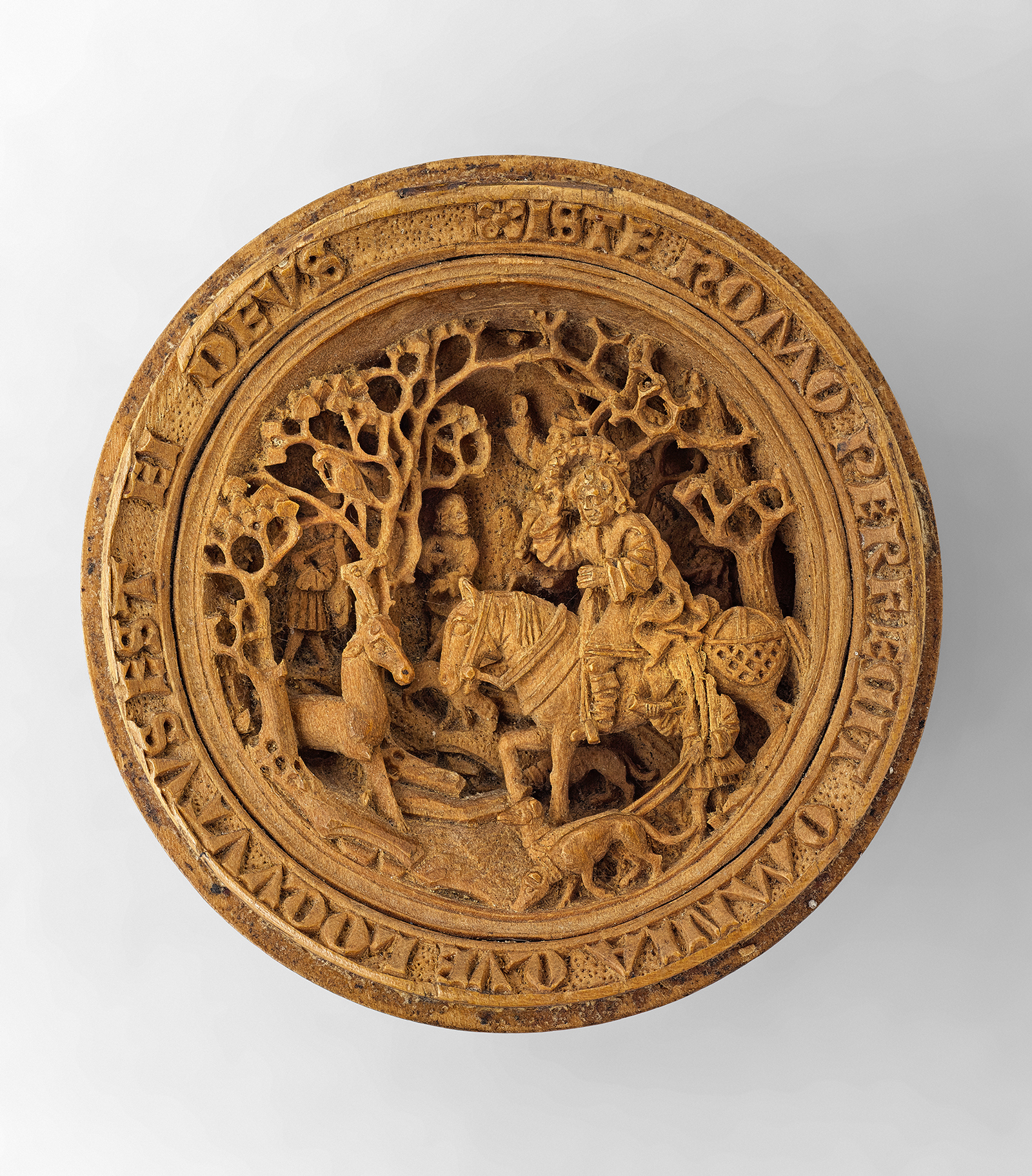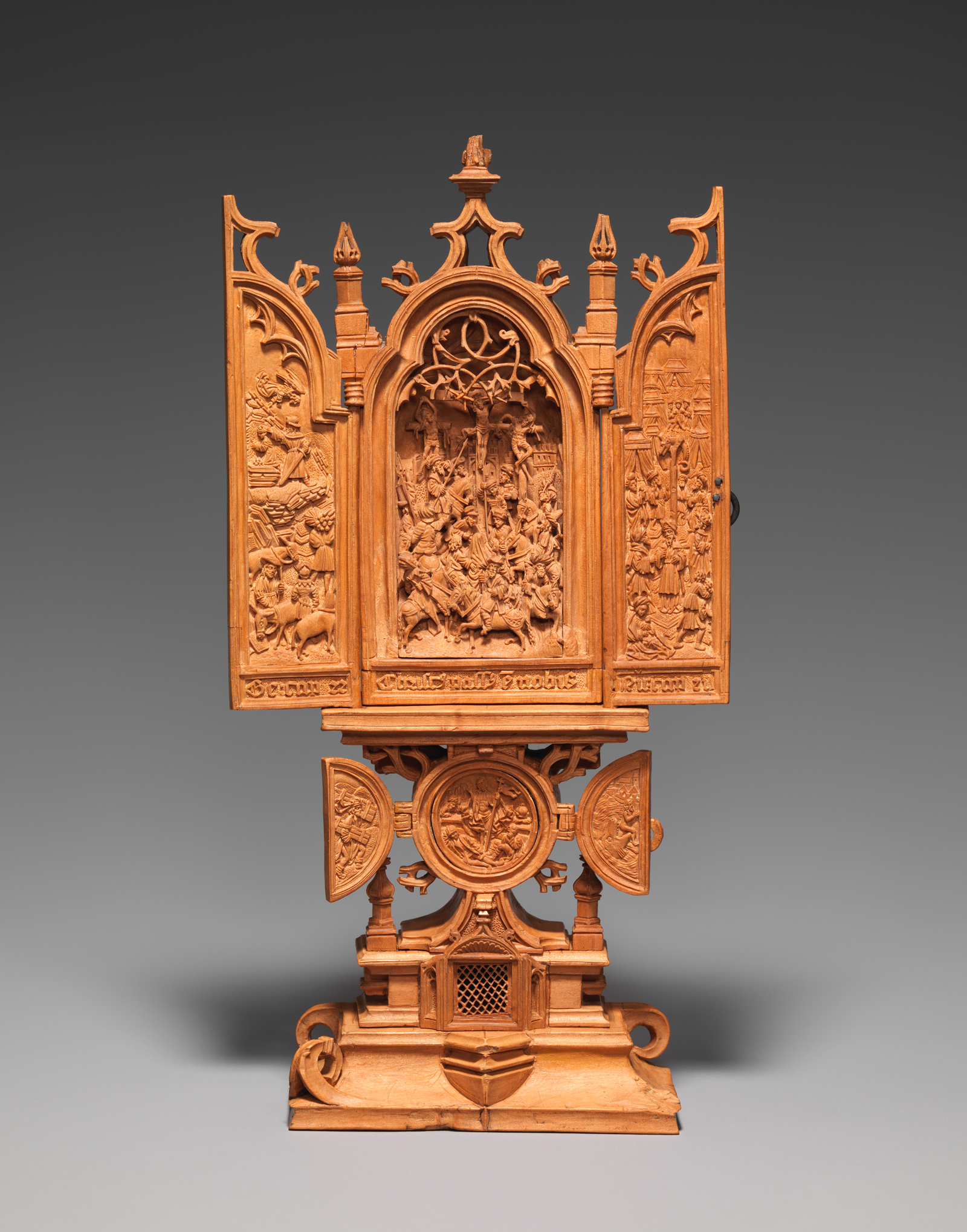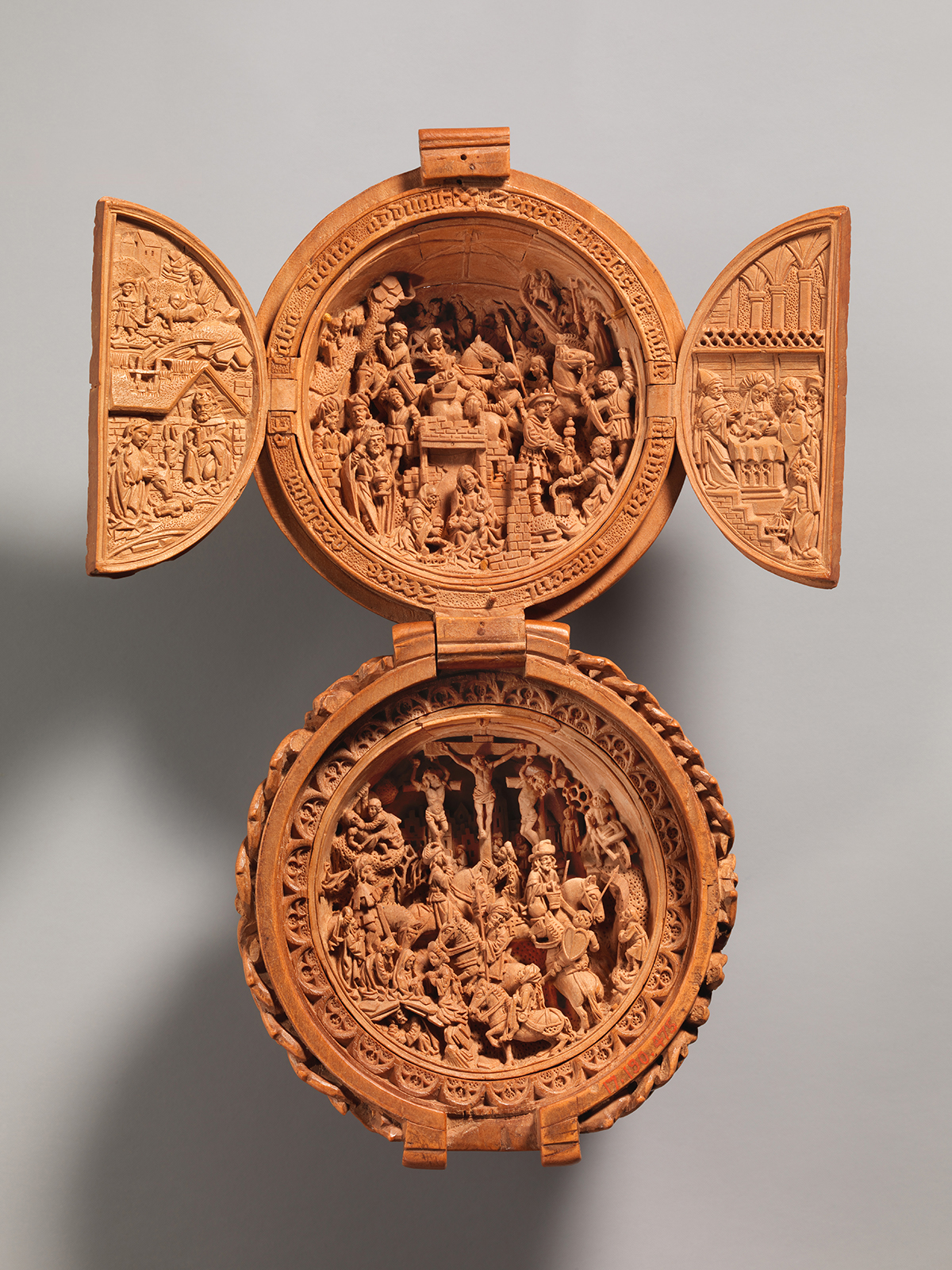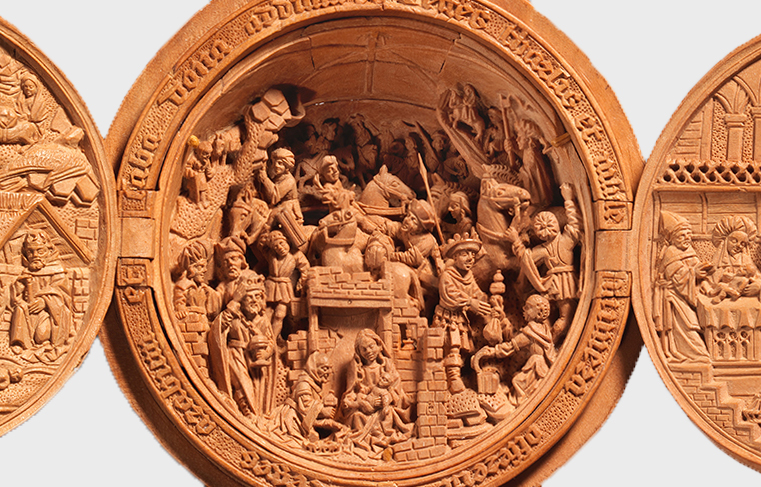The Universe in a Nutshell New York Review of Books

The Thomson Drove/Art Gallery of Ontario/Photo past Craig Boyko/Ian Lefebvre
Half of a boxwood prayer bead showing the Vision of Saint Hubert, 36 ten 19 mm, Netherlands, early sixteenth century
The sixteenth century boxwood miniatures currently exhibited at the Cloisters—thought to exist in big part the work of a single individual in the Netherlands—are and so breathtakingly intricate, the minuscule scenes in prayer beads and altarpieces rendered so exquisitely, that whatsoever viewer should exist prepared to gasp, "How did they practise it? The tiny lilliputian sheep! The tiny footling angels! The tiny little spears no thicker than horse hairs! Elaborate gothic reliefs shrunk to the size of walnuts!" The exhibition plays to this sense of wonder but also reveals, afterward centuries, the secrets of their seemingly miraculous creation. Nevertheless, these atomic objects have an impact for which the viewer who expects just to marvel at technical virtuosity will be unprepared.

The Metropolitan Museum of Art/Photograph by Peter Zeray
Miniature boxwood altarpiece showing the Crucifixion, Netherlands, early sixteenth century
The fine gothic tracery of the prayer beads' shells would give them plenty traction to sit comfortably in the palm of your manus, were you allowed to concord them (and how yous will long to!) equally their original owners did. The densely crowded scenes, sometimes no wider and so 25 millimeters, accept to be inspected very closely in order to parse the narratives they depict: alternately the Admiration of the Magi, the Passion and Resurrection, the Last Judgment. Cradling that light, frail object must have given one a sense of great intimacy, of cherishing the story contained in it. But at the aforementioned time it's every bit if you are viewing the scene from a tremendous altitude, the entire tiny tableau seen from an impossibly remote perspective, possibly a God's-eye one.
The small round prayer chaplet that open to reveal these scenes naturally create the impression that you have miraculously establish this sacred miniature world in a nutshell. As the show explains, they were, in reality, carved in parts—the tiny scenes made separately and then inlaid into the circular beat out. New tools such as magnifying glasses—which were used starting in the late thirteenth century—were probable needed to make incisions equally small as .3 millimeters. Just the organicism of the forms, etched into this supple wood, requite a sense of a natural entity. They bring to mind the mathematical concept of self-similarity, that is, of a structure whose parts resemble the shape of the whole. Information technology is every bit though the Christian story is part of the ever-burgeoning fabric of nature. If y'all can observe the Passion and Resurrection in an object this pocket-size, why not in a raindrop? At that place's a sense in which this is non a fiction to the believer: everything in the universe really is imbued with this story, all of information technology meaningful as function of God's creation.
In one extraordinary miniature altarpiece the gothic tracery adorning the central arch curves naturally into the shape of the thorns in Christ'due south crown. It frames the scene of Christ's crucifixion. Every aspect of the minute cosmos that is revealed when the wings of the triptych are parted is invested with emotional meaning, every bit though the artist wants to remind us that if we look closely, with the right kind of attending, nosotros will see that deep love and deep hurting are built into the construction of the universe.
The day I visited the exhibition, the sculptor and author David Esterly, in chat with the conservator Pete Dandridge, described as "uncanny" the upshot of noticing two minuscule equus caballus-riders at the edge of this particular scene looking out at the viewer. I thought of my favorite case of this technique: the sole affections in a heavenly chorus painted by Fra Angelico facing out and summoning me in with a placid gaze. When I inspected the triptych, the consequence was even more than powerful: being invited into that tiny, remote earth was more like looking through a telescope at a star and seeing someone looking dorsum at you. To the Christian owner, it may have seemed like a manner of maxim, "You tin can contemplate this ancient story as if information technology were a distant object. But at the same time you are in this and of this and it is beholding y'all too."
To me, the uncanny awareness was that of an alarmingly directly communication from the artist. According to the company guide, which is how the accompanying catalog is referred to, it is conjectured that if a single individual made the objects it would have taken thirty years, that is (in those days), an entire adult lifetime of boggling patience and meticulous effort. His intentions, written into something so small then fragile, haven't however been drowned out. Even in the relentlessly hectic, electric megacity of New York you tin can notwithstanding find them.
"Small Wonders: Gothic Boxwood Miniatures" is on view at the Met Cloisters through May 21.
mixonvadvapegul1994.blogspot.com
Source: https://www.nybooks.com/daily/2017/05/12/the-universe-in-a-nutshell-gothic-boxwood-miniatures/








0 Response to "The Universe in a Nutshell New York Review of Books"
Post a Comment